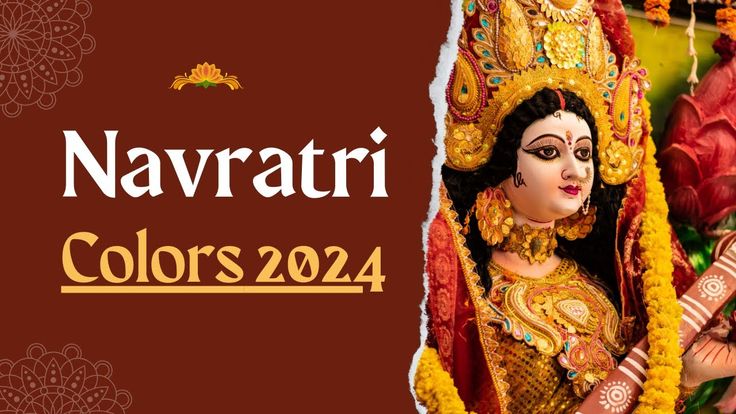Navratri, the vibrant festival that honors Goddess Durga, is approaching, bringing with it nine days of devotion, celebration, and spirituality. In 2024, Shardiya Navratri will begin on October 3 and conclude with Dussehra on October 12. One of the most beautiful aspects of Navratri is the tradition of wearing specific colours on each day, with each hue carrying deep symbolic meaning that reflects the divine qualities of the Goddess. Wearing these colours is believed to enhance devotion and allow devotees to connect with the powerful energies of the Goddess.
Below is a detailed guide to the nine colours of Navratri and the significance of each day.
Navratri Day 1: Yellow (Shailaputri)
On the first day of Navratri, devotees worship Goddess Shailaputri, who is considered the daughter of the mountains and the first incarnation of Goddess Durga. Shailaputri represents purity and the primal forces of nature. The colour Yellow, worn on this day, is symbolic of warmth, enthusiasm, and vibrant energy. This bright hue is said to uplift the spirit and radiate positivity, connecting devotees with the vitality of Goddess Shailaputri.
Navratri Day 2: Green (Brahmacharini)
The second day is dedicated to Goddess Brahmacharini, the form of Goddess Parvati before she married Lord Shiva. Brahmacharini signifies penance and immense devotion. The designated colour of this day is green, symbolising nature, growth, fertility, and renewal. Green represents peace and serenity, encouraging a sense of harmony with the world and within oneself, qualities that align with Brahmacharini’s dedication and determination.
Navratri Day 3: Grey (Chandraghanta)
On the third day, devotees honour Goddess Chandraghanta, known for the crescent moon adorning her forehead. This form of the Goddess represents the serenity and strength of a married woman. The colour of the day is grey, representing resilience and the power to overcome adversity. It is a reminder of inner strength, even in challenging times. Grey is also seen as a calming, balanced colour that resonates with the peaceful yet powerful energy of Goddess Chandraghanta.
Navratri Day 4: Orange (Kushmanda)
The fourth day is dedicated to Goddess Kushmanda, who is believed to have created the universe with her radiant smile. As the creator, she embodies exuberance and vitality. The colour orange is once again the focus, representing the warmth and energy that Goddess Kushmanda imparts to the cosmos. Wearing orange on this day encourages feelings of joy, creativity, and positivity.
Navratri Day 5: White (Skandamata)
On the fifth day, devotees worship Goddess Skandamata, the mother of Skanda (Lord Murugan, the God of War). As a nurturing mother, Skandamata symbolises purity, care, and unconditional love. The colour white, worn on this day, represents innocence, peace, and the purity of heart. Wearing white helps devotees connect with the maternal and protective aspects of the Goddess, seeking her blessings for a peaceful and blessed life.
Navratri Day 6: Red (Katyayani)
Day six is dedicated to Goddess Katyayani, a fierce and warrior-like form of Durga known for her courage and strength. Red, the colour associated with this day, symbolises passion, power, and devotion. It is a bold hue that reflects the fervour with which devotees worship the Goddess. Offering red chunris (scarves) to the deity is a common tradition, as this colour signifies deep reverence and the fiery energy of Goddess Katyayani.
Navratri Day 7: Royal Blue (Kalaratri)
The seventh day is devoted to Goddess Kalaratri, one of the most fearsome forms of Durga, who represents the destruction of evil forces. Despite her fierce nature, she is also a protective force. The colour of the day is royal blue, representing both depth and tranquillity. Royal blue signifies richness and stability, capturing the dual nature of Goddess Kalaratri, who is both powerful and calming, destructive yet protective.
Reference:







